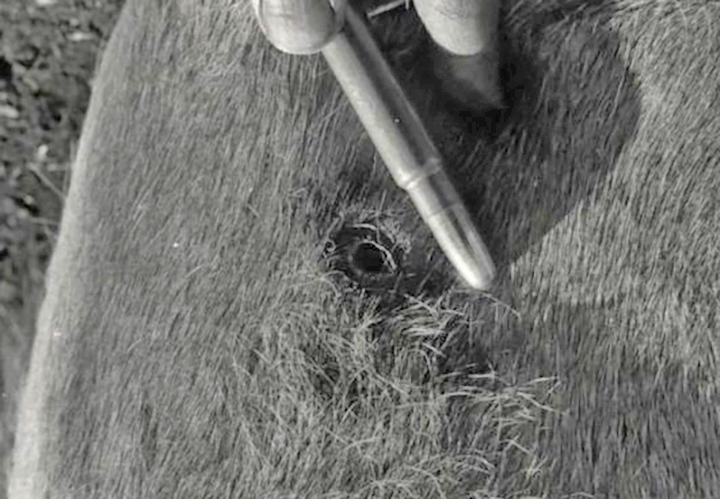Interior Ballistics
This discipline of the area of firearms expertise concerns that which occurs from the instant the firing pin touches the primer until the projectile exits the muzzle and the pressure in the barrel drops to one atmosphere. This includes such issues as firing pin embedment into the primer, the transfer of machining marks onto the surface of the primer, the generation of the propellant gases within the firearm, engravement of the rifling, and all else contained within the definition of interior ballistics.
In particular, LTC Alphin’s skills as an Interior Ballistics Expert enabled him to correctly evaluate the dynamics of firing pin embedment. This, in turn, has led to debunking attempts by prosecution “experts” to link certain expended cartridge cases to a certain firearm. This was a factor in both the Jenkins and Holmes cases. In initial consultation on other cases, just this knowledge alone has helped defending attorneys shape their theory of the case.
Exterior Ballistics
This discipline concerns that which occurs from the instant of projectile muzzle exit until the projectile touches the target. This also includes the muzzle ejecta, which is the remains of the combusted propellant powder and the microscopic bits debrided from the projectile. This is necessary for distance from muzzle to target and for helping with orientation of firearm to target at the moment of the shot. This definition also includes stability of the projectile in free flight, deceleration of the projectile, and all else contained within the definition.
These skills combine with such things as the Griess Test and the Sodium Rhodizonate Test. These tests, among others, can be used for determination of distance from muzzle to target at the moment of discharge, and for determination of the orientation of the firearm to the target. As an Exterior Ballistician, LTC Alphin has used these skills to solve many complex shooting incident scene issues, such as the Cobb v. Burke civil suit over an estate, and the innocence of a wrongly accused man in the Coca Cola Handler case.
Terminal Ballistics
Terminal ballistics concerns that which occurs from the instant the projectile touches the target until both the projectile and the target come to rest. This includes both Kinetic Energy and Chemical Energy projectiles. The inert projectiles used in small arms ammunition fall into the kinetic category.
Terminal ballistics skills are far different and more inclusive than what Medical Examiners provide. The ME is more a toxicologist and is normally not qualified as a terminal ballistician. For example, ME’s are taught that bullets travel in straight lines through mammalian targets. In fact, they most certainly do not. Proper examination of the tell-tale damage along the path of a penetrating projectile; along with knowledge of the precessional velocity and other instability issues for spin stabilized, kinetic energy, projectiles in free flight (which is a bullet from a small arm) is necessary. If done properly, the terminal ballistician can show the actual path of the bullet, and the actual orientation of target and bullet in three dimensional space, at the instant of bullet impact.
Medical Examiners are taught to use the “Y” incision in an autopsy. This is a valid procedure for toxicology and for determining the cause of death in a disease case. For use in a shooting incident case, these techniques are not valid and actually destroy usable evidence. As a terminal ballistician, LTC Alphin uses techniques specifically designed for a terminal ballistics post-mortem. These techniques were derived from the Col. Benjamin Huger tests of 1854, The Thompson-LaGarde tests of 1921-22, the activities during the unpleasantness of 1946 to 1990, plus the definitive work done by Col. Dr. Martin L. Fackler and LTC Arthur B. Alphin in the modern era.
LTC Alphin used these skills and techniques to great effect in the Mays case, the Wilhelm case, the Tamme case (in alliance with a forensic anthropologist), and many other cases.



